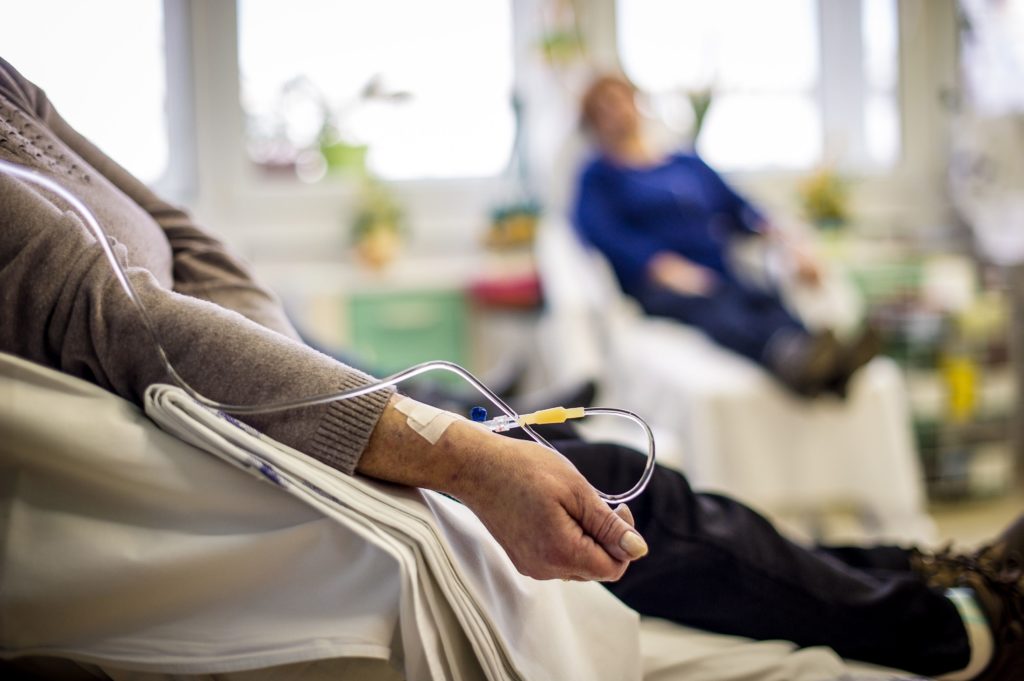
Recently Diagnosed or Relapsed? Stop Looking For a Miracle Cure, and Use Evidence-Based Therapies To Enhance Your Treatment and Prolong Your Remission
Multiple Myeloma an incurable disease, but I have spent the last 25 years in remission using a blend of conventional oncology and evidence-based nutrition, supplementation, and lifestyle therapies from peer-reviewed studies that your oncologist probably hasn't told you about.
Click the orange button to the right to learn more about what you can start doing today.
- You are here:
- Home »
- Blog »
- Multiple Myeloma »
- Partial Stable Progressive – Multiple Myeloma
Partial Stable Progressive – Multiple Myeloma

Response criteria of either partial stable or progressive disease is a challenge for the newly diagnosed myeloma patient undergoing the standard-of-care therapy plan of induction therapy followed by an autologous stem cell transplant followed by maintenance therapy.
Partial, stable, or progressive response to induction therapy, an autologous stem cell transplant is a challenge… to the patient. Why? Because the patient will undergo both induction therapy and an autologous stem cell transplant and be told that he/she needs to undergo more therapy.
The patient’s oncologist will undoubtedly prescribe repeated chemotherapy regimens upon chemotherapy regimens in hopes of achieving a complete response.
In my research and experience, repeated chemo regimens will expose the patient to huge amounts of toxicity, short, long-term and late stage side effect risks all for little in terms of length of life and certainly not quality-of-life.
To understand what I’m saying, please read Multiple Myeloma Treatment- The Cure vs. Control Debate
When I wrote about responses to therapy divided response criteria into 3 categories:
- Minimal Residual Disease (- or +)
- Stringent, Complete, Very Good Partial
- Partial, Stable or Progressive Disease
Achieving either MRD, sCR, CR or even VGPR is usually considered to be a sort of multiple myeloma victory. And achieving one of these responses early in the the patient’s initial therapy plan is excellent and indicates that, on average, the patient will achieve a long first remission and possibly a long overall survival. However, it is important to stress that the opposite is not necessarily the case.
Meaning, the myeloma patient can control their incurable blood cancer with less chemo, lower doses of toxicity rather than undergo aggressive, toxic, “potentially curative” high dose therapies.
Multiple Myeloma Remission Criteria:
- Partial Response (PR)-> 50% reduction of serum M-protein and reduction in 24 hours urinary M-protein by >90% or to < 200 mg/24 h-
- Stable Disease (SD)-Not meeting criteria for CR, VGPR, PR, or progressive disease meeting criteria for CR, VGPR, PR, or progressive disease-
- Progressive Disease- Increase of > 25% from lowest response value
Stable Disease-
- Myeloma Chemotherapy- Myelosuppression
- Multiple Myeloma Diagnosis- Too Old for Stem Cell Transplant?
- Multiple Myeloma Treatment- Very Slow Responder
- Do You Agree With My Decision Not To Undergo Chemo?
Partial Remission-
- Multiple Myeloma- Partial Remission
- Can Multiple Myeloma Go Into Remission?
- Myeloma Chemotherapy- Partial Remission Post Induction Therapy
Progressive Disease-
Salvage Therapy for Myeloma Does Not Help Progressive Disease
Remember that this post is talking about the newly diagnosed myeloma patient’s response to treatment.
- Learn more about your prognosis as a myeloma patient- click now
- To Learn more about chemo for multiple myeloma- click now
David Emerson
- MM Survivor
- MM Cancer Coach
- Director PeopleBeatingCancer
A systematic classification of death causes in multiple myeloma
“However, the majority of MM patients ultimately relapse or progress, and die of disease related conditions such as severe infections, renal failure or toxicity3,4. Nonetheless, the increasing life expectancy of the MM population might translate into an increase in causes of death (COD) unrelated to MM.
The aim of this study was to develop and apply a reliable systematic classification for COD in MM, combining the assessment of a specific COD and a causal link between the COD and MM, MM therapy or unrelated conditions, and to assess the impact of known MM prognostic factors on COD…
The median overall survival of the cohort was 5.9 years…
A superordinate system of categories determines the causal link between the COD and MM or side effects of MM therapy and distinguishes the following categories:
- MM-dependent,
- MM-independent,
- not attributable to (1)/(2), and
- unknown (Fig. 1).
In addition, MM-dependent COD (1) are subdivided into (1A) MM progression-related, (1B) therapy-related, and (1C) not attributable to (1A)/(1B)…
Among 483 deaths in our cohort, 80.7% (n = 390) were MM-dependent (1), 1.7% (n = 8) MM-independent (2), 7.0% (n = 34) not attributable to (1)/(2) (3), and 10.6% (n = 51) unknown (4) (Fig. 2a). The most common MM-independent (2) COD (n = 8) depicted in the lowest specific MedDRA term SOC were cardiac disorders (50.0%, n = 4) and nervous system disorders (25.0%, n = 2). In category (3) (n = 34) infections and neoplasms (both 26.5%, n = 9), cardiac disorders (20.6%, n = 7), nervous system disorders (8.8%, n = 3), and respiratory disorders (5.9%, n = 2) were the most frequent SOCs…
Among 390 MM-dependent (1) COD, 41.8% (n = 163) were MM progression-related (1A), 19.5% (n = 76) therapy-related (1B), and 38.7% (n = 151) not attributable to (1A)/(1B) (1C) (Fig. 2b). The most common MM progression-related (1A) SOCs (n = 163) were neoplasms (50.9%, n = 83), infections (15.3%, n = 25), renal disorders (12.9%, n = 21), and cardiac disorders (6.7%, n = 11, Fig. 2c)…
Besides MM progression, infections (15.3%), renal disorders (12.9%), and cardiac disorders (6.7%) were the most common MM progression-related COD. In an analysis conducted by Riccardi and colleagues, infections and renal insufficiency constituted the leading MM-related COD, too12.
Infections (63.2%), SPM (10.5%), vascular disorders (7.9%), and GvHD (6.6%) were the leading therapy-related COD in our cohort. Bringhen and colleagues observed similar therapy-related COD, with infections, cardiac complications, SPM and venous thromboembolism being the most common3.

